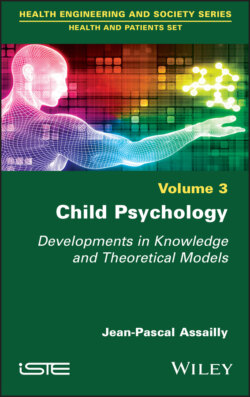Читать книгу Child Psychology - Jean-Pascal Assailly - Страница 47
1.8. The family and its contemporary evolution
ОглавлениеParents are like lighthouses at sea for children: they play in the area lit by their presence (Anne-Marie Fontaine).
The main developments have been:
– the influence of the transformation of the status of women in society: access to education and then to salaried employment from the 19th century, to equality and then to contraception in the 20th century. This has led to a drop in the birth rate (two children per French woman today compared to 2.47 in 1970);
– the outdated institution of marriage: since the abolition of marital control and of the distinction between legitimate and natural children, more than one child in two (59%) is born today to unmarried parents, compared with 6% in 1972; the number of marriages per year has fallen from 400,000 in the 1970s to 240,000 today. Couples who marry do so much later in life (37 years for men, 35 years for women). Finally, the development of civil unions (Pacte Civil de Solidarité, PACS) and the facilitation of divorce are two recent elements of marriage being seen as an outdated concept;
– changes in the status of the child: the popularization of child psychology since the 1970s (Dolto’s “the baby is a person”, “the king child”, etc.) has modified parental educational strategies and parent–child relationships.
To conclude, fewer children, who are more wanted, and more autonomous but more fragile couples, hence:
– the increase in divorces and shared custody: with feminism, we have seen an increase in the rights and involvement of fathers and, after a separation, we accept that the father–child bond should no longer be broken; shared custody judgments are now pronounced in 21% of divorces and, in the other cases, an agreement is obtained between the father and the mother on custody;
– the persistent inequality of paternal and maternal roles: despite these societal evolutions, mothers continue to assume the parental role for 30 minutes more per day on average than fathers;
– the diversification of the family model (such as mixed, single-parent, homo-parent and multi-parent families).
There is therefore no naturality of the family, as there is with animals; we are in the symbolic and the cultural (abandonment, adoption, heritage, name).
With these evolutions, what will remain of the Oedipus Complex? This was built around the father–mother–child relationship, but already in 1921, the ethnologist Malinowski had questioned its universality, by observing the numerous variations of family structures, the influence of patriarchy and the lines of transmission, for which the Oedipus Complex is only valid within the framework of Roman law, Christian morality and the Viennese bourgeoisie. Thus, in certain cultures, the prohibition of incest does not relate to the mother but to the sisters.
Thus, from 1950, Lacan, in his structuralist perspective, no longer spoke of the father in the sense of pater familias, but of the paternal function. This function is present even in the absence of the father and can be very well assumed by the mother. In certain traditional father–mother–child families, however, this function is not assumed at all.
Then, in the 1970s, Lacan added that “there is no sexual relationship”, nothing allows a priori the harmony of complementarity between men and women. Would the Oedipus Complex finally only be the impossibility of jouissance and the obligation of lack? In single- or homoparental families, inseminations and surrogacy signify this as being impossible. The Oedipus Complex is only one of the possible forms of the impossible.
